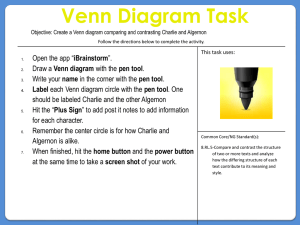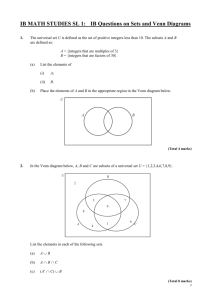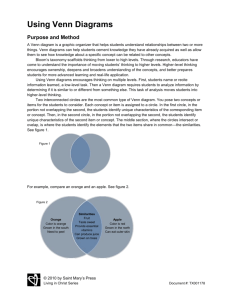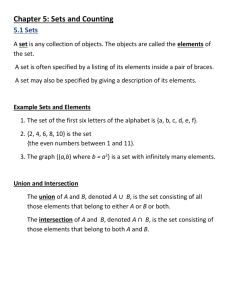SS.GradeK.CompareAndContrastMeAndMyFriend
advertisement
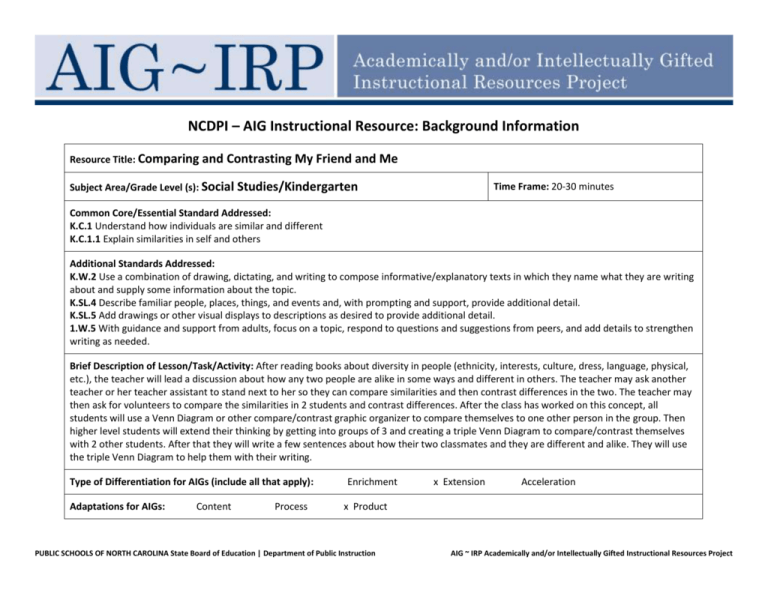
NCDPI – AIG Instructional Resource: Background Information Resource Title: Comparing and Contrasting My Friend and Me Subject Area/Grade Level (s): Social Studies/Kindergarten Time Frame: 20-30 minutes Common Core/Essential Standard Addressed: K.C.1 Understand how individuals are similar and different K.C.1.1 Explain similarities in self and others Additional Standards Addressed: K.W.2 Use a combination of drawing, dictating, and writing to compose informative/explanatory texts in which they name what they are writing about and supply some information about the topic. K.SL.4 Describe familiar people, places, things, and events and, with prompting and support, provide additional detail. K.SL.5 Add drawings or other visual displays to descriptions as desired to provide additional detail. 1.W.5 With guidance and support from adults, focus on a topic, respond to questions and suggestions from peers, and add details to strengthen writing as needed. Brief Description of Lesson/Task/Activity: After reading books about diversity in people (ethnicity, interests, culture, dress, language, physical, etc.), the teacher will lead a discussion about how any two people are alike in some ways and different in others. The teacher may ask another teacher or her teacher assistant to stand next to her so they can compare similarities and then contrast differences in the two. The teacher may then ask for volunteers to compare the similarities in 2 students and contrast differences. After the class has worked on this concept, all students will use a Venn Diagram or other compare/contrast graphic organizer to compare themselves to one other person in the group. Then higher level students will extend their thinking by getting into groups of 3 and creating a triple Venn Diagram to compare/contrast themselves with 2 other students. After that they will write a few sentences about how their two classmates and they are different and alike. They will use the triple Venn Diagram to help them with their writing. Type of Differentiation for AIGs (include all that apply): Adaptations for AIGs: Content Process Enrichment x Extension Acceleration x Product PUBLIC SCHOOLS OF NORTH CAROLINA State Board of Education | Department of Public Instruction AIG ~ IRP Academically and/or Intellectually Gifted Instructional Resources Project Explanation of How Resource is Appropriate for AIGs: This task is appropriate for higher-level students because while the student continues to work with the Essential Standard for his grade level, he will also extend his learning by comparing/contrasting himself to two other classmates independently. They will also use first grade objectives for writing to complete a writing sample about how the three classmates are alike and different. Needed Resources/Materials Possible books about diversity: - David’s Drawings by Cathryn Falwell - How My Parents Learned to Eat by Ina R. Friedman - Why am I Different? by Norma Simon Possibly internet or magazine pictures Small Venn Diagrams for higher level students to record information Sources: NA TEACHER NOTES: The teacher should find books that illustrate and celebrate diversity (physical, ethnic, interests, etc.). A book that specifically focuses on similarities and differences in animals, young people, and/or adults would be great. NCDPI AIG Curriculum Resource Outline STAGE ONE: ENGAGE The teacher will read books about diversity. She may show pictures from the internet or a magazine to show different looking people. The class will have a discussion about similarities and differences in people. Prior to the lessons, the teacher may ask another teacher or teacher assistant if she is comfortable being compared and contrasted to the teacher. The teacher can point out similarities between her and the second adult, and the other adult can point out similarities as well. Students can be asked to point out similarities as well. Then they can do the same with differences. STAGE TWO: ELABORATE Next the teacher can ask for student volunteers. As the teacher and students notice similarities and differences in the two students, the teacher can list those in two columns on the board. If the teacher wants to introduce a Venn Diagram to the whole class, she could then draw a Venn Diagram on the board or on chart paper (if she wants to keep it in the room). She could label each circle of the Venn Diagram, one circle with one of the student’s names and the other circle with the other student’s name. Then she could look at the difference chart created earlier and list the differences in each student’s circle (for ex., if hair color was on the difference chart, she could list blonde hair for the student who had blonde hair and brown hair for the student who had brown hair). Then she should ask students where the similarities should go. Since the similarities are attributes that fit both students, those attributes should be listed in the middle because the middle of the Venn Diagram belongs to both circles. Most students will remain in the class to work in pairs to complete a Venn Diagram of a friend and themselves. PUBLIC SCHOOLS OF NORTH CAROLINA State Board of Education | Department of Public Instruction AIG ~ IRP Academically and/or Intellectually Gifted Instructional Resources Project The teacher can either have her small group of higher-level students leave the room with an assistant or volunteer to complete their own triple Venn Diagrams with two classmates while she is working with her whole class on Venn Diagrams or she can let them work independently after her whole class lesson. The benefit of taking the students out is that a volunteer or assistant could let the higher-level students figure out how a triple Venn Diagram works by discovery rather than going through each step to find out about a Venn Diagram with the whole class. STAGE THREE: EVALUATE The teacher will assess the number and the depth of similarities and differences that the students listed on their Venn Diagrams. If students only list physical characteristics, that would be at the lower level. If students begin to question each other to find out more, and they list those attributes (interests, extracurricular activities, beliefs, religious choice, future hopes and dreams), then the teacher can assess that students have thought at a deeper level. Also, if the teacher chooses to do this small group lesson as discovery (first time using a double or triple Venn Diagram without a lot of explanation), she can determine how students pick up on this new strategy of using a graphic organizer to compare/contrast two or three things/people. TEACHER NOTES: If the teacher likes working with rubrics, she could design a simple rubric to assess the information recorded on the Venn Diagram and how easily students use the Venn Diagram. PUBLIC SCHOOLS OF NORTH CAROLINA State Board of Education | Department of Public Instruction AIG ~ IRP Academically and/or Intellectually Gifted Instructional Resources Project



